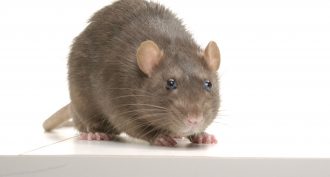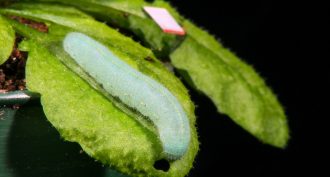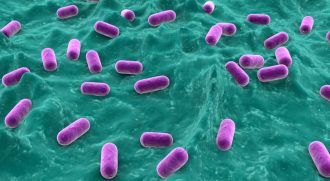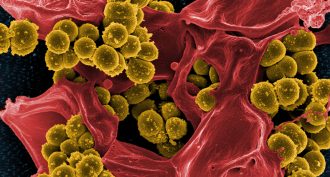
A former lab rat, Esther Landhuis is a California-based freelance journalist who writes about biomedicine and STEM diversity. Her stories have also appeared in Science News, Scientific American, NPR, Nature, Chemical & Engineering News and Undark.

All Stories by Esther Landhuis
-
 Health & Medicine
Health & MedicineSkip the soft drinks, period
Beyond the quest for trim waistlines and cavity-free teeth, girls have another reason to shun sodas and other sweetened drinks. These beverages may help launch the body’s menstrual cycles at an earlier age.
-
 Animals
AnimalsResilient hearts for deep-sea divers
How do aquatic mammals have enough energy to hunt prey while steeply dropping their heart rate to stay underwater? A new study of dolphins and seals provides clues.
-
 Climate
ClimateThunderstorms can generate powerful radiation
Thunderstorms don’t just hurl lightning bolts. Some churn out high-energy radiation that can be seen by spacecraft. This radiation offers scientists a glimpse of the inner workings of thunderclouds.
-
 Physics
PhysicsPicture This: Christmas from space
Satellite images show that cities brighten during holidays. Charting such changes can point to factors affecting energy use and contributing to global warming.
-
 Genetics
GeneticsWhy animals often ‘stand in’ for people
Rats, birds, fish — even flies and worms — can stand in for people in laboratory testing. This allows scientists to safely evaluate harmful chemicals as well as to identify and test potential new drugs. But such tests will never be a foolproof gauge of effects in people.
-
 Health & Medicine
Health & MedicineCan soft drinks speed aging?
A new study suggests a reason why daily sugary-soda drinkers are more prone to disease: Guzzling these drinks shortens the protective caps on chromosomes. If the caps get too short, cells die.
-
 Health & Medicine
Health & MedicineExercise builds brawn — and brains
One 20-minute session of leg exercises improved memory recall by about 10 percent.
-
 Tech
TechRepelling germs with ‘sharkskin’
A biotechnology company has found a way to repel superbugs without toxic chemicals. It mimics the texture of a shark’s skin.
-
 Tech
TechPlants ‘listen’ for danger
Scientists used lasers to show that plants can “hear” insect pests. Those leafy plants then mount a chemical attack in response to the bug’s chewing sounds — but not toward harmless noises such as a gentle breeze or a bug’s mating call.
-
 Microbes
MicrobesThe war on superbugs
Doctors and scientists are exploring ways to stem the growing global crisis of antibacterial resistance.
-
 Microbes
MicrobesExplainer: What you can do to fight antibiotic resistance
Doctors and scientists are not the only people who can help preserve the effectiveness of life-saving antibiotics. Even patients have a role to play, as these tips show.
-
 Microbes
MicrobesSuperbugs: A silent health emergency
Have antibiotics become too popular? Overusing these medicines fuels resistant germs that pose a global health threat.